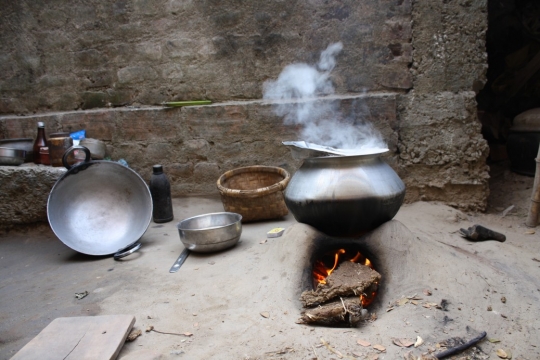If you’re looking to replace your washing machine, have no fear: at least one major retailer stocks six different types of washers, with eight different sets of features, from nine different brands.
Do you like high-capacity front-loading washers? Perhaps you want your washer to also function as a dryer? Or a steamer? You’re covered!
Unfortunately, this is not always how implementing agencies promoting potentially lifesaving technologies in developing countries have operated. Instead, many adopt what may be best described as a “one-washer-fits-all” approach: promoting one device, which is presumed to be effective in all contexts and under all conditions. What follows is an all-too-familiar outcome: scarce resources spent promoting devices that are fundamentally unsuited to local contexts or customer preferences and which are ultimately abandoned—or sometimes used for entirely different purposes!
This problem is by no means isolated to the household energy sector. For instance, researchers have often found that household water filters do little to impact health outcomes in communities facing water-borne risks. In one particularly egregious case, it was found that nearly a year into an intervention, only about half of households knew how to properly use the water filter in question, while a quarter simply did not use it at all! When asked about why they were dissatisfied, households overwhelmingly pointed to the excruciatingly slow rate of filtration.
But perhaps in no other sphere is this phenomenon more disheartening than in the energy access challenge faced by the Global South. Nearly three billion people continue to rely on traditional fuels (such as fuelwood) and inefficient stoves for their primary energy needs, yet adoption of improved cookstoves has been incremental. Improved stoves promise reduced emissions as well as fuelwood savings—welfare improvements for the household (especially women and children) as well as for the environment. The services they deliver feature in at least ten of the Sustainable Development Goals. So why the disconnect? Could it be that we’re failing to consider customer preferences in the same way we do with washing machines?
Why don’t households adopt and use energy technology that improve health and livelihoods?
Why might an improved stove fall into disuse? This question is at the heart of the “cookstove conundrum.” Why do households continue using inefficient traditional methods of cooking? Could it be that they like the taste of roti cooked over a wood fire? Perhaps the new stove isn’t big enough to cook rice for the entire family’s dinner in one sitting? Maybe it broke and no one bothered to find someone to fix it? Maybe it’s a solar stove that can only be operated at inconvenient times? What’s clear is that without the exclusive use of clean energy solutions, expected health and environmental benefits are significantly dampened.
The answer to our question might be deceptively simple: technologies are often not being designed with customer needs in mind, and interventions promoting those technologies are not catering to customers’ preferences. This is one of the insights from Pattanayak and coauthors, who report on a multiyear experimental promotion of improved stoves in a new working paper. Their findings confirm that preferences matter! In related work, Jeuland and coauthors use a unique survey instrument to gauge what specific cookstove attributes are most or least preferred. Some families, for instance, want the cleanest, most efficient cookstove no matter the price, while others are more sensitive to price and care less about pollution reductions. Needless to say, households in remote, rural contexts have unique needs and preferences over the devices they use in their homes. There is no “perfect” device—and it is imperative that implementers recognize this reality to guide effective interventions.
The challenges faced by organizations working to promote lifesaving energy technologies are many—from credit constraints or maintenance challenges to weak rural supply chains or a lack of knowledge about potential health benefits. Implementers should (and often do) rely on creative solutions to sidestep some of these obstacles, such as offering rebates to credit-constrained consumers. Let’s stop “one-washer-fits-all” thinking from becoming the obstacle for effective interventions.
by Hannah Girardeau and Faraz Usmani
This blogpost was first published at The Duke Household Energy and Health Initiative
